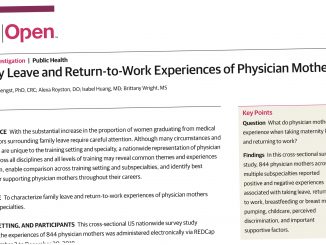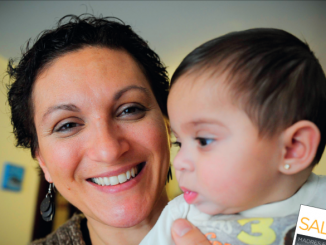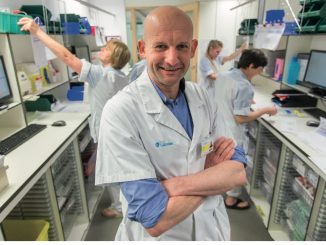For many young women with breast cancer, the chance to have a child is a top priority. They want to know what different treatments could do to their fertility and the health of a future baby, whether getting pregnant could make a recurrence more likely, and how to access the services they need. Matteo Lambertini wants women to have that information too. He talks to Anna Wagstaff about his part in making it happen.
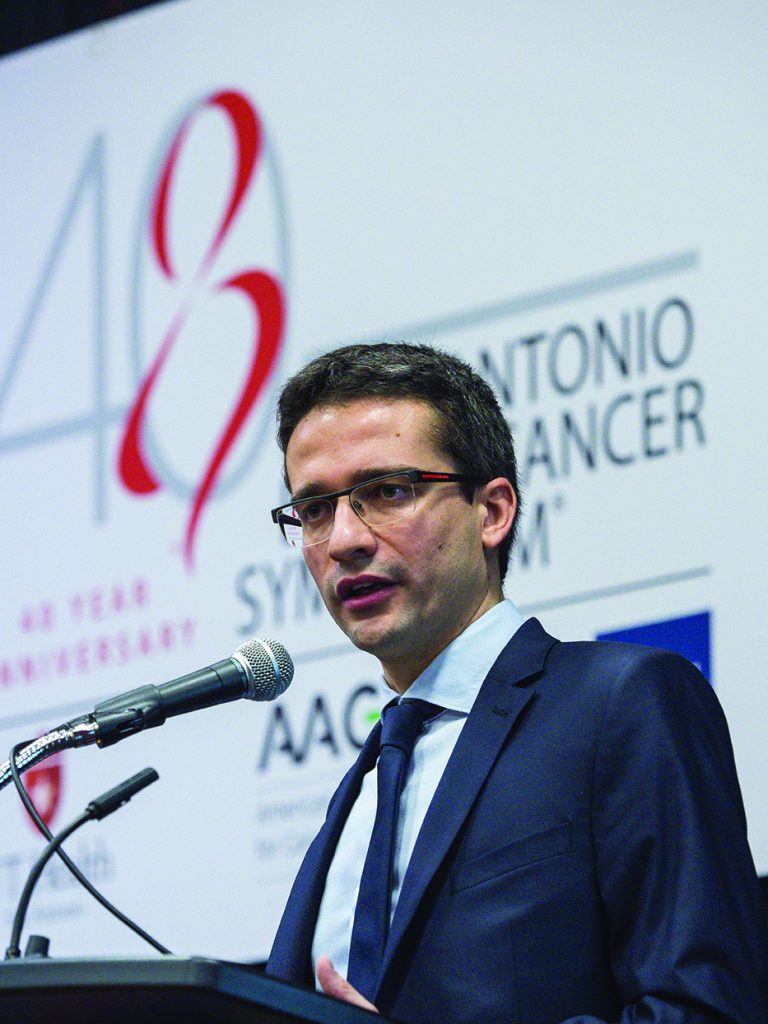
Getting published as a lead author in JAMA, the Journal of the American Medical Association, is an achievement any doctor would be proud of. To do so at the age of 30, while still training to be a medical oncologist, is really quite impressive. If any young oncologists were to ask how he managed it, Matteo Lambertini would no doubt reply: motivation and some great mentors.
Both undoubtedly played a part, but his decision to focus his efforts in a niche field that was just taking off as he enrolled in medical school will certainly have helped. Lambertini, who recently returned to his home institution in Genova, Italy, after three years at the Institut Jules Bordet in Brussels, specialises in the management of breast cancer in young women, with a particular interest in fertility and pregnancy-related issues.
Now adjunct professor of medical oncology at the Policlinico San Martino Hospital – University of Genova, he is one of a small number of upcoming oncologists specialising in this poorly funded area; the pioneers number a select few, and he counts pretty much all of them as friends and mentors. The issue is of great importance to many patients and is also fascinating on a biological level, because breast cancer is a malignancy that for the most part is driven by the sex hormones involved in fertility and pregnancy. Premature menopause and infertility are common side effects of anticancer treatments.
Lambertini is interested, for instance, in how to minimise the risk that chemotherapy will damage a woman’s future fertility by inducing premature menopause. His JAMA paper reported a follow up of a trial led by his Italian mentor, Lucia Del Mastro, asking whether using GnRH (gonadotrophin-releasing hormone) agonist shots during chemotherapy increased the chances of women resuming menstruation after treatment (it did) and of becoming pregnant (there was a trend in that direction).
He is interested in assessing the impact of different breast cancer treatments on the risk of inducing premature menopause and on a woman’s chances of a successful pregnancy. He is investigating whether conceiving raises the risk of recurrence for patients with a prior history of breast cancer (the evidence so far indicates not).
Lambertini points out that important questions have yet to be fully answered concerning the use of in vitro fertilisation (IVF) in women with a cancer diagnosis, and on the efficacy and safety data of embryo or oocyte cryopreservation in cancer patients. “These were standard strategies when I started in 2010, because they had been used in healthy infertile women for many years. However, to properly counsel cancer patients, we need to know: is it as effective for them as in infertile healthy women? Is it safe to stimulate breast cancer patients with hormones [to promote ovulation for egg harvesting]?”
Recent data from groups in the US, Spain, Belgium and Italy among others, show that these strategies are as effective in women with breast cancer as they are for infertile healthy women, says Lambertini. “They appear also to be safe, in terms of not increasing the risk of disease recurrence for patients who receive this stimulation.”
As he explains the issues and evidence, Lambertini is careful to spell out ‘the message’ to ensure the implications have been understood. This is clearly something he and his colleagues do a lot. While specialist interest in this topic may be confined to a select few, a very large number of patients have a lot at stake, and they and their doctors need the clearest possible understanding of options and the evidence.
Why it matters
Breast cancer is by far the most common cancer in women during their childbearing years, and as the average age for starting families has risen, so has the number of women who find their hopes and plans threatened by a cancer diagnosis. Some of them are actively going through IVF at the time they are diagnosed, says Lambertini, “This is a real tragedy, because you are discussing cancer with a young patient, and telling her she may not be able to have a family any more, and she was actually trying to have one.”
Patients and advocates attending the 2018 International Conference of Breast Cancer in Young Women (BCY4) ranked issues related to fertility and pregnancy among their top three areas of concern (together with quality of life and psychological care). For many young women, the chance to have their own child ranks no. 1 and they are prepared to take risks to achieve it, says Lambertini. “In some circumstances, they prefer to receive suboptimal treatment – less active treatment, but less gonadotoxic, so associated with a lower risk of impairing their future chances of having a family.”
“For many young women, the chance to have their own child ranks no.1 and they are prepared to take risks to achieve it”
Sticking with adjuvant endocrine therapy for the full recommended five to ten years can also pose a problem, as pregnancy is not possible during treatment. This could be one factor explaining poor adherence to adjuvant therapy among younger women, as reported in several studies. Lambertini also acknowledges other factors, as all current endocrine treatments have side effects, including an impact on women’s sex lives, which can be a particular issue for younger patients, and five years (let alone ten) is a long time.
The message to oncologists, says Lambertini, is to ensure a thorough discussion of the pros and cons of proposed treatment options, so that patients know what to expect, and then be proactive in asking how they are getting on with the treatment and whether they are taking it as specified.
One trial – the POSITIVE study – is underway to try to define what additional risk, if any, is posed by interrupting endocrine therapy for up to two years, after a minimum of 18 months of treatment. This could allow women the option of taking a period out and then returning to complete the treatment after their child is born.
On many questions, says Lambertini – including the safety of conceiving for women with a history of breast cancer – available evidence, while reassuring, is almost entirely retrospective. “We need more prospective research, larger numbers of patients, international collaborations, to have more real insights to properly counsel our young patients facing concerns related to fertility and pregnancy” he says.
As breast cancer morphs into distinct biological subgroups, and treatment options become more numerous and complex, evidence generated with respect to one type of cancer and treatment protocol may not apply to others.
Lambertini’s PhD, titled, “Unmet fertility and pregnancy-related issues in young breast cancer patients,” addressed a number of questions, including the toxicity risk that some newer treatments such as trastuzumab and lapatinib pose to the ovaries. It also explored fertility- and pregnancy-related issues in women whose breast cancer is associated with a germline harmful mutation in the BRCA genes.
Some preclinical data show BRCA mutations can have a negative impact on female ovarian function and fertility. Lambertini and colleagues are therefore questioning whether breast cancer patients with a BRCA mutation may be at increased risk of treatment-induced premature menopause, how effective fertility preservation strategies may be in BRCA-mutated patients, and whether it is safe for these patients to become pregnant. “This is an example of an area that has just started to be explored also by our group, so we have very preliminary data. Of course, research and international collaborations are needed, and extremely important in this field.”
Spreading the message
Even where the evidence is quite strong, many oncologists have not yet got the message. A survey of physicians who attended either the 2016 BCY3 conference on breast cancer in young women or the 2017 St. Gallen International Breast Cancer Conference, showed significant levels of confusion, says Lambertini, who was lead author of a report published in The Breast in 2018 (The Breast 2018, 42:41–49). “Although the survey generally showed a positive and encouraging picture, adherence to guidelines on fertility preservation and pregnancy-related issues in young breast cancer patients remains sub-optimal even in this selected group of physicians with a particular interest in breast cancer care.”
More than nine in ten of these physicians do discuss the risk of treatment-induced premature menopause and infertility with all newly diagnosed young cancer patients before starting treatment.
However, fewer than four in ten suggested their patients use embryo cryopreservation, and just over six in ten had discussed oocyte cryopreservation. Uncertainty seems to be a factor here, with almost half of the respondents reporting they lacked adequate knowledge of these primary options for fertility preservation.
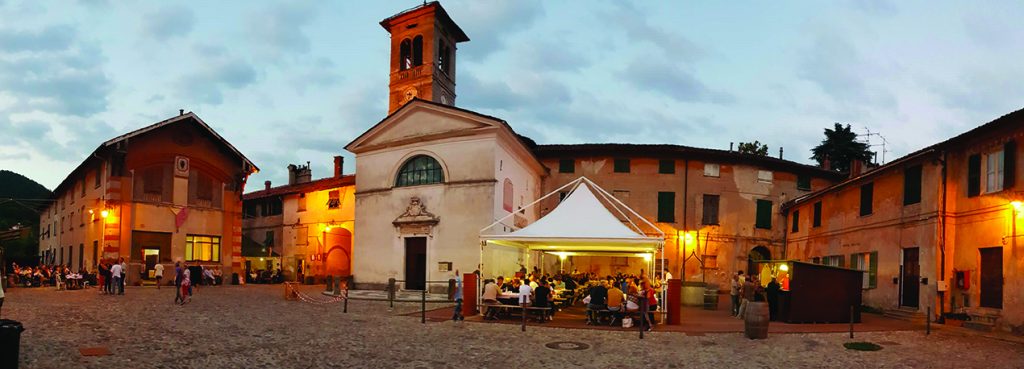
Lack of access to specialist facilities was also cited as a problem. Lambertini believes many breast cancer treatment centres could do more to build partnerships with IVF facilities in their region, if they are not available within their centre, to ensure timely access. Women who want to preserve their fertility are usually highly motivated, he says, and prepared to travel to get it.
The survey of physicians revealed confusion over whether becoming pregnant after completing treatment for breast cancer might raise the risk of recurrence, with almost one in three respondents indicating they thought it might. “Not true,” says Lambertini. “On the basis of available evidence, pregnancy after completing treatment and follow-up can be considered safe even in patients with oestrogen-receptor [ER]-positive breast cancer – the most hormonally driven form.” That evidence includes an international case-control study of 333 women with a history of ER-positive breast cancer who became pregnant (matched 1:3 to non-pregnant patients of similar characteristics), which was published last year with Lambertini as lead author (JNCI 2018, 110:426–29)
Even among this fairly specialised group of respondents, fewer than half had consulted the available international guidelines on fertility preservation and pregnancy in breast cancer survivors, and more than one in ten did not even know such guidelines existed.“Further educational initiatives are needed to improve physicians’ knowledge and adherence to available guidelines,” the authors concluded.
“Almost half the respondents reported they lacked adequate knowledge of the two primary options for fertility preservation”
The Italian Breast Group (GIM) may be ahead of the game here. They are running the PREFER (PREgnancy and FERtility) study “as a national comprehensive programme aiming to optimise care and improve knowledge around these topics,” (BMC Cancer 2017, 17:346; The Breast 2018, 41:51–6). The stated objective is to gather prospective data about patients’ preferences and choices towards the available fertility preserving procedures, and then monitor the success and safety of these strategies and the hormonal changes during chemotherapy. But it is also seen as an effective way of getting oncologists in the participating centres to routinely discuss these issues with patients, says Lambertini, since they are more likely to have those discussions if their centre is part of a study.
That study, now running in more than 25 centres across Italy, marks another early professional achievement. Lambertini wrote the study protocol, at the tender age of 25. “My Italian mentor has been always very supportive since I was a medical student, so while waiting for my oncology residency to begin, she gave me a contract to start working in the hospital helping them with some clinical work, but mostly with research-related activities.” Writing the PREFER study protocol was the first task he was allocated.
A family doctor
The irony is that Lambertini does not seem to be driven by an ambition to get published and fight his way to the top. His goal, from an early age, was to be a general practitioner, like Benvenuto Serafini, the family friend he knew from childhood, who took care of the health and wellbeing of the 600 residents of Ferrania – the village around an hour’s drive from Genova, where Lambertini was born and raised.
His father worked as agronomist, his mother taught physical exercise at the secondary school. There were no doctors in the family, so the young Matteo thought he’d like to try something new. That remained his motivation until half way through his medical training, when his mother was diagnosed with a stage 4 aggressive gastric cancer. “I was very near the phase of studies when I had to decide what to do – stick with the idea of becoming a GP, or move to a speciality, and at that time I could not think about anything other than oncology.
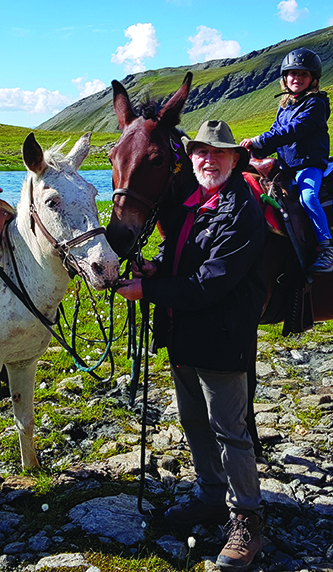
“After this devastating event, my family and I had to go through, I started to think that the only real disease was cancer, and in each department where I trained as a medical student, only when there were patients with cancer did I feel that these were the people who really need help. So I felt this is what I have to do, as if my mother made me recognise what path to take. So I started being more involved in the oncology department.”
With Del Mastro as mentor, Lambertini developed his interest in breast cancer and the care of young women, including managing fertility- and pregnancy-related concerns. After qualifying, he applied for a fellowship to work at the Institut Jules Bordet in Brussels, alongside Hatem Azim (junior), a young Egyptian oncologist who was publishing prolifically on the topic while researching for his PhD, and Evandro de Azambuja, the head of the Breast Data Centre.
An ESMO fellowship enabled Lambertini to stay at the Institut Jules Bordet to do his own PhD, which he finished at the end of 2018 – thanks, he says, to the help of “several fantastic national and international mentors” including Isabelle Demeestere (Brussels), Fedro Peccatori (Milan) and Ann Partridge (Boston).
“Only when there were patients with cancer did I feel that
these were people who really need help”
After an intense few years, Lambertini is determined to pay more attention to his work–life balance back in Genova. This may be easier said than done, as he now has to divide his time between research and clinical practice.
While in Brussels he married Giulia Viglietti – a biologist from a small village close to his own, who joined him at the Institut Jules Bordet to work in the breast cancer translational research laboratory, led by Christos Sotiriou. “I pushed a lot on my career, I did as much as I could, I published a lot. Now I am back and in a different phase of life. Of course I am very dedicated, I really like my job, so I will keep working on the same path, but it is now time also to dedicate more time to my family and try to enlarge it as well.”
It could be argued that Lambertini has stayed true to the spirit of his early goal of becoming a ‘family doctor’. His clinical and research work is all about helping women diagnosed with breast cancer start their own families, he is committed to putting his own family first, and he still enjoys close ties to the community he comes from.
His father, approaching retirement, was recently elected mayor. His sister is married to the son of the GP who first inspired Lambertini to go for a career in medicine. His mother-in-law still lives in the neighbouring village, where she runs a small restaurant. Lambertini and his wife, meanwhile, are busy setting up their own home in Genova. He will not be short of things to do on his free time – and there are plenty of people around to remind him about giving family life a chance to flourish alongside his work.



